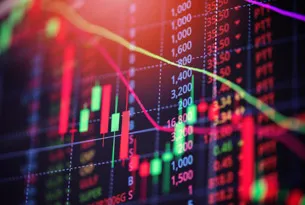We are locked into a bear market that many analysts are convinced is just getting underway. The obvious question is, “What do we do now?, asks Dan Sullivan, editor of The Chartist Mutual Fund Letter.
All of the major averages are exhibiting bearish chart patterns. Needless to say, overall sentiment amongst stock market participants is extremely negative. The latest from Investors Intelligence now shows 30.9% in the bullish camp vs. 39.3% bears.
The latest from the American Association of Individual Investors, in their recent poll, has the bullish contingent down to 16%. As you know, this is considered to be positive from a contrary opinion standpoint but not always.
Bank of America confirms that AAII bullish readings below 20% have historically been highly bullish. A buy signal is triggered after the first move below 20%. This has occurred 14 times since 1988 with the last one coming on February 18 of this year.
After the previous thirteen buy signals, the S&P 500 has gained an average of 7.36%, 11.24% and 15.22% over the following three-, six- and twelve-month periods.
The results have been most impressive. There is one glaring exception; however. The Buy signal that was triggered on January 10, 2008, came in the early weeks of one of the most devastating bear markets in a generation. The S&P 500 ended up losing 36% over the following year.
It is interesting to note that our long-term models agreed with the Bears, flashing a major sell signal five days later. Acting on the signal, we moved into a 100% cash position and did not reenter the market until April 14, 2009. This time around, our models remain bullish in total disagreement with the Bears that are predicting doom and gloom.
Meanwhile, support for the S&P 500 is in evidence at 3,500. This area is near the peak of a ‘W’ pattern traced out between September and November 2020.
If you are a patient, long term, conservative investor I recommend that you begin your own $50,0000 Balanced Portfolio by investing in the suggested ETF portfolio below. The recommended holding period is a minimum 5 to 7 years.
$25,000 should be evenly divided between three income ETFs: iShares Barclays 1-3 Year Treasury (SHY); iShares Lehman 3-7 Year Treasury (IEI); and iShares Lehman 7-10 Year Treasury (IEF).
$10,000 should be invested in the SPDR S&P 500 (SPY), with $5,000 invested in Invesco QQQ Trust (QQQ) and $5,000 invested in iShares Russell 2000 (IWM). We then suggest positions of $2,500 each in SPDR Midcap 400 (MDY) and Vanguard FTSE Emerging Markets (VWO).
The above allocation for a total of $50,000 is approximately invested 50% in short to intermediate income investments and 50% invested in stocks. This allocation will be less volatile than the S&P 500 and is designed for the conservative investor seeking income and growth.




































